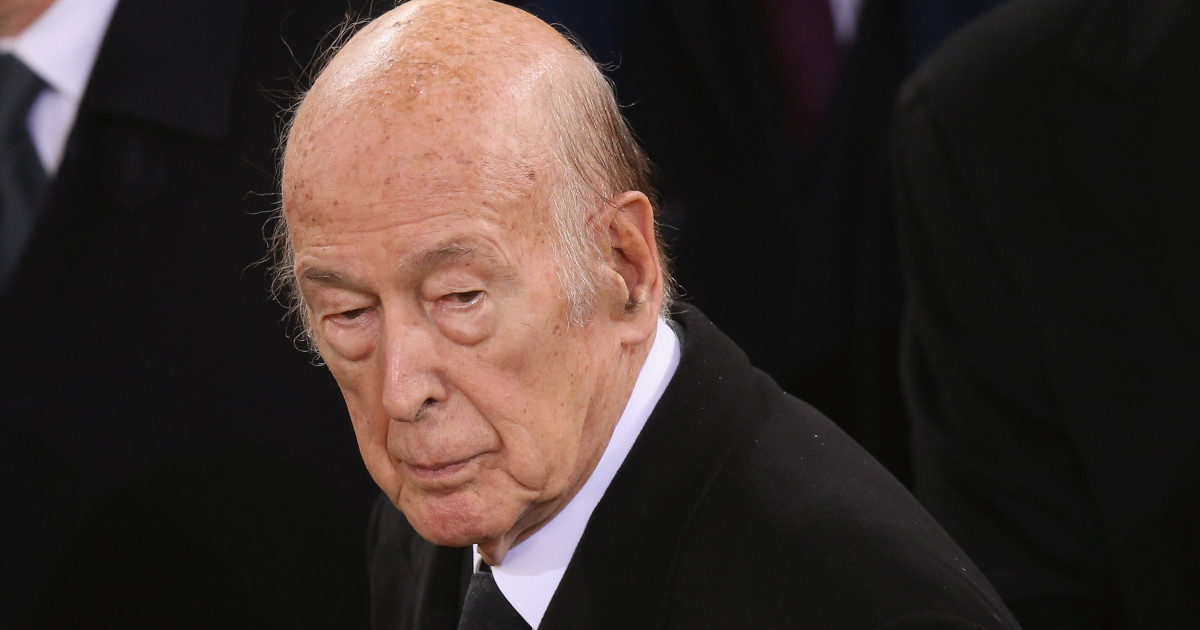
[ad_1]
Former President Valéry Giscard d’Estaing, a promoter of profound reforms in France and a staunch supporter of the European project, died Wednesday night “as a result of COVID,” the senior official’s family said in a statement.
Valéry Giscard d’Estaing passed away on Wednesday, December 2, at his family’s home in Loir-et-Cher. His health had deteriorated and he died of COVID-19. According to his wish, the funeral will take place in the strictest family privacy, ”announces the statement from his family, quoted by AFP.
The man who, at the time of his election, became the youngest president of France, died at the age of 94, Agerpres reports.
The last public appearance, at the funeral of Jacques Chirac
One of his last public appearances took place on September 30, 2019, during the funeral in Paris of President Jacques Chirac, who served as prime minister during his 1974-1976 term.
During his tenure, until 1981, he carried out actions to modernize the country, promulgating important social reforms such as the legalization of abortion or the reduction of the right to vote at age 18. He was also the first non-Gaullist president of the Fifth Republic, after the iconic General de Gaulle and his political heir Georges Pompidou.
Valéry Giscard d’Estaing served only one term, being defeated in the 1981 elections by the socialist François Mitterrand. The latter died in 1996, so only two of France’s former presidents are still alive: Francois Hollande and Nicolas Sarkozy.
Heart problems and a sex scandal at 94
The youngest president (48 years old) of the Fifth Republic at the time of his election in 1974, the center-right politician Valéry Giscard d’Estaing, had been hospitalized several times in recent months for heart problems.
Giscard d’Estaing, who had been living in his country residence in Authon (central France) since he was quarantined, had been hospitalized for several days in the cardiology department of the Tours Hospital from November 15 to 20 for heart failure . The former president had previously been hospitalized in Paris for a few days in mid-September for a mild lung infection. Then the doctors ruled out an infection with the new coronavirus.
Giscard d’Estaing, who turned 94 on February 2, has already been admitted several times to the cardiology service of Hospital G. Pompidou a few years ago for a stent implant.
His name also appeared in the press in May in connection with an investigation into a sexual assault following a complaint by a German journalist, who accused him of touching her buttocks in an interview more than a year ago.
A convinced European
A convinced former European President, Valéry Giscard d’Estaing supported the European project during his seven-year term and returned to the forefront 20 years later, leading the European Convention charged with drafting the articles of a draft European Constitutional Treaty. The negative vote of the French for this project in the May 2005 referendum was a great disappointment for Giscard d’Estaing.
He had a fruitful collaboration with German Chancellor Helmut Schmidt.
At the same time, to relaunch the European Union after the UK’s vote in favor of Brexit in June 2016, he called for a Europe more concentrated around the “founding countries” and “neighbors who share the same ideas.”
In his memoirs, “Le Pouvoir et la vie” (Power and Life), Valéry Giscard d’Estaing writes that the political figures who most impressed him were Charles de Gaulle and Jean Monnet.
He set up the G7
Valéry Giscard d’Estaing established in 1975 the annual summit of the most industrialized countries, which later became the G8.
Concerned about the economic and monetary tensions that followed the 1971 dollar crisis and the 1973 oil crisis, the French president had the idea of transposing into the leadership of the most industrialized states the custom that the finance ministers of these countries meet informally for consultations. on current pressing issues.
In November 1975, Giscard d’Estaing brought together the Heads of State and Government of the USA, FRG, Japan, Great Britain and France at Rambouillet Castle, near Paris, and invited Italy to attend the meeting as the country that presides over the Community. European economy. Thus was born the G6, which became the G7 in 1976 under pressure from the United States, which advocated the participation of Italy and Canada.
In 1998, Russia became a full member of the annual assembly, reaching the G8 formula.
Editor: Luana Pavaluca